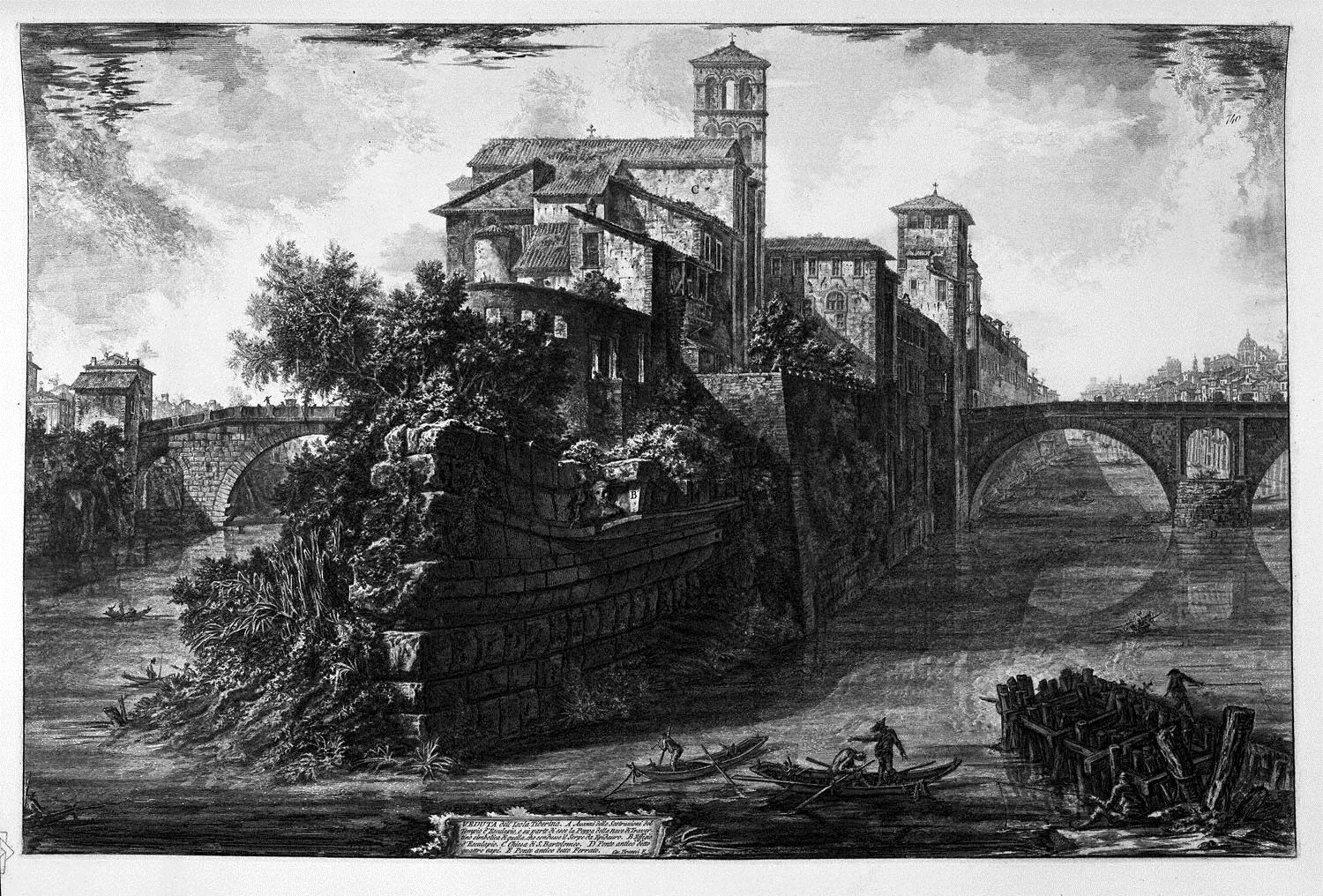

They show the influence both of his early training in stage design with the Bibiena family in Bologna, and his fascination with architecture, encouraged no doubt by his father's being a stone-mason. Unlike the other thousand or so etchings he produced over forty years, which essentially set out to record the magnificence of Rome's imperial past and argue for the superiority of Roman culture over that of the Greeks, Piranesi refused to expand upon what these strange, haunting interiors were meant to signify. The Antichità Romane, and his sublime images of ruins, allowed Piranesi to make a name for himself as an antiquarian.The Carceri stands apart from the main body of Piranesi's work for several reasons, most important of which is the mystery surrounding the actual purpose of the series. Piranesi’s miniscule figures and grand, vast structures represent the relationship people of the 18th century believed they had with nature and ancient ruins.

The sublime was introduced as philosophers and intellectuals from France and Britain came to see that the overwhelming powers of nature were, in a way, beautiful, because of the pure terror and emotion it incited in viewers. In the early 18th century, nature was determined to be a devastating force that needed to be controlled control over nature represented the control one had over man. The figures within Piranesi’s etchings often hint towards the sublime, an art style defined by the seemingly overwhelming terror of nature looming over mankind. The Antichità Romane was set apart from the work of Piranesi’s peers due to the greater spectrum of buildings he included in the work and by the way he placed them within landscape settings, often with the addition of figures. Besides representing a massive advance in the how archaeological discoveries were communicated to the broader public, the Antichità Romane focused attention in a visually stunning way to neglected aspects of antiquity, such as the techniques of Roman building science and non-traditional Roman decoration. Classical archaeology became popular, or valued, after the discovery of Pompeii and Herculaneum, sites that piqued the interest of many intellectuals and aristocrats. 21 The Antichità Romane represented a milestone in the history of classical archaeology, a newly established area of study for historians. Piranesi’s expansive topographical knowledge of Rome allowed him to place the many diverse and isolated ancient remains into the broader context of Rome’s new urban development. As depicted in the views of the burial chamber and tomb, Piranesi balances the picturesque appearance of Roman architecture with detailed explanatory text in one plate. The more than 250 images feature original methods of illustration, combining an impressive amount of data and skilled etchings into a single plate. Its purpose was the education of contemporary designers and their patrons. Antichità Romane itself set out to provide a sweeping overview of the archaeological information on Ancient Rome Piranesi gathered over the years. This production rapidly earned Piranesi an international reputation, as evidenced by his election to the Honorary Fellowship of the Society of Antiquaries of London a year later.

The results of Piranesi’s comprehensive research were presented in the four volumes of the Antichità Romane (1756). “Piranesi spent his first few years in Rome measuring and sketching ancient architectural sites. D Fabbriche moderne sopra le rovine del Foro di Nerva.Īt lower right: Piranesi Architetto dis. C Giardino del S.r (r as superscript) Marchese Ceva. A porta antica appartenente al terz' or: / dine. XXIXĪt bottom center: Veduta del second'ordine di una parte della Calcidica del Foro di Trajano. Printed on a medium weight laid paper without watermark (View of Part of the Upper Hemicycle of Trajan's Forum)įrom: Le Antichità Romane (Roman Antiquity), 1756-1757, Four Volumes I Veduta del second’ordine di una parte della Calcidica del Foro di Trajano.


 0 kommentar(er)
0 kommentar(er)
